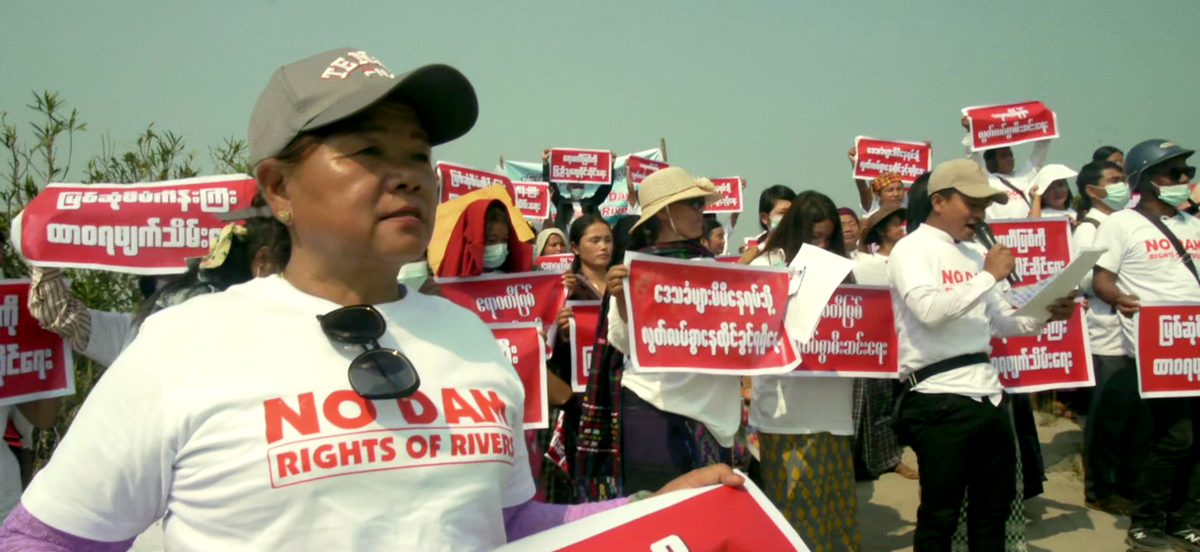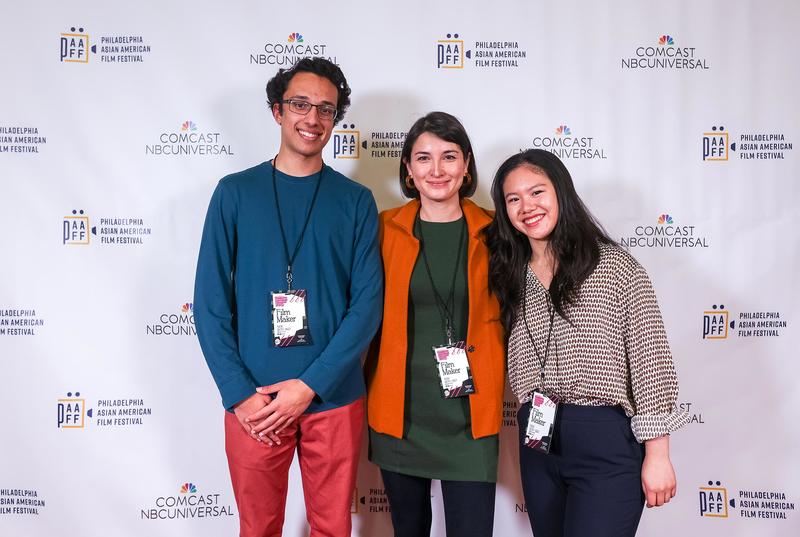Faculty Member’s New Film Captures Myanmar’s First and Only Country-Wide Environmental Movement

A still from Emily Hong's "Above and Below the Ground."
Details
Assistant Professor of Anthropology and Visual Studies Emily Hong’s Above and Below the Ground made its debut at the BlackStar Film Festival in August and is now on a global tour. Six Bi-Co community members supported its creation.
Perhaps it’s due to increased awareness of the perils of climate change or modern society’s growing disconnect from nature, but there’s no denying environmental documentaries have risen sharply in popularity. As anyone with a Netflix subscription can attest, seemingly unlimited offerings with a bent toward environmentalism are always just a click away. But while such documentaries can raise awareness about important environmental issues, they can often have the deleterious effect of casting entire communities, who are often Asian, as villains while overlooking their role as stewards of the land.
Above and Below the Ground, a new documentary from Assistant Professor of Anthropology and Visual Studies Emily Hong, upends that narrative, capturing Myanmar’s first and only country-wide environmental movement through the people — Indigenous women activists and punk rock pastors — who led it. Crafted over six years during a rare period of openness and fledgling democracy in Myanmar, Above and Below the Ground explores the struggles and victories of three Kachin women of different generations and members of the band BLAST as they galvanize the country against a planned Chinese-built megadam through protest and karaoke music videos.
“One of my motivations behind the film is that we have to be able to think of alternative ways of relating to the environment than we currently are,” Hong says. “For me, what these activists and musicians are doing is retooling a lot of their own ancestral wisdom for a new generation.”
The massive, multi-billion Myitsone Dam, had it been realized along the sacred Irrawaddy River in Myanmar’s northernmost Kachin State, would have flooded an area roughly the size of Singapore and displaced countless people. It’s been stalled, for now, thanks to the efforts of the film’s central protagonists (Hong avoids using the word ‘subjects’ to describe them). And though the film is rooted in the borderlands of China and Myanmar, Hong says that activists everywhere will relate to the dynamics of its protagonists. Furthermore, as a feminist film, she says, it eschews reliance on a singular "charismatic hero" vehicle often seen in environmental films to explore how we can better understand the leadership of significant movements by featuring activists, musicians, and their families.
“It’s not just about one leader,” Hong says. “We want to ecologize this idea of movement leadership and show all the different roles that are important in the movement.”
Sound, namely BLAST’s aching love songs-turned-protest anthems and the rich ecological soundscape of the Kachin State, figures prominently in the film, which premiered at the BlackStar Film Festival in Philadelphia in August. Beginning with organizing punk rock shows and playing guitar and singing for the Burma 88 Coalition band (which Hong co-founded with friends in college) music has continuously provided her activism with a soundtrack.

Her early activist efforts led her to Thailand, along the border of Myanmar, where she worked with refugees who fought for democracy and the rights of the country’s Indigenous people during the height of Myanmar’s previous military rule. While pursuing her graduate degrees in filmmaking and anthropology, she returned to the border, re-engaged with the contacts she made, and learned about the film's central focus: a karaoke video album that had sparked resistance to the dam project.
“I think you need something to keep the momentum moving forward and to sustain moments of joy, even when those wins seem really few and far between,” she says of music’s role in activism. “So, for me, music — whether it’s listening, organizing around it, or playing — has just been such a big part of it.”
Above and Below the Ground also differs from the canon of documentary storytelling in terms of visual approach. Hong says it draws on techniques inspired by feminist sensory ethnography, something she has explored in previous short films with her peers in Ethnocine Collective. Hong began making Above and Below the Ground on her own in 2016, and recruited a cadre of women filmmakers, producers, and advisors — many of them Asian and Indigenous — to realize it fully. The film team includes Bi-Co students and alums: associate producers Noorjehan Asim BMC ’21, Erica Kaunang ’22, and Sophia Wan ’23; research assistants Athena Intanate ’22 and Vivek Mittal-Henckle ’26; and communications coordinator Fatema Mun ’25. Kaunang and Wan also participated in the 10-week-long Docu-Lab led by Hong in 2022, a partnership between Haverford’s Visual Culture, Arts, and Media (VCAM) facility and the Asian American Documentary Network.
Since its release this summer, the film has been screened worldwide and headlined the Philadelphia Asian American Film Festival. It was featured at the Yamagata International Documentary Film Festival in Japan, where Hong was featured in a long-form interview that aired on NHK World. It was also screened in Hawai’i and simulcast to 20 universities organized by the University of Hawai’i at Manoa and the GETSEA Southeast Asian Studies consortium. Alongside festival and educational screenings, Hong and the film’s impact team led by Stella Naw and Ji San, have organized community screenings, cultural celebrations featuring BLAST performances, and exchanges with Indigenous and environmental leaders in several countries. While Above and Below the Ground has been warmly received, it was at a screening in Taiwan that Hong appreciated how a film’s power derives from more than its message.
“There was a young half-Taiwanese, half-Burmese woman who said, ‘I’ve seen films about Myanmar, but they’re all really depressing. This is the first film that is hopeful and shows how resilient and funny and brave this community is in the face of everything that they've faced,’” Hong recalls. “That stayed with me for a long time. If one person gets our film, that’s all that matters to me.”
Above and Below the Ground will continue its global tour of festivals as well as impact screenings aimed at building alliances with the frontline environmental organizations featured in the film, Kachin Development Networking Group, and Mungchying Rawt Jat.




